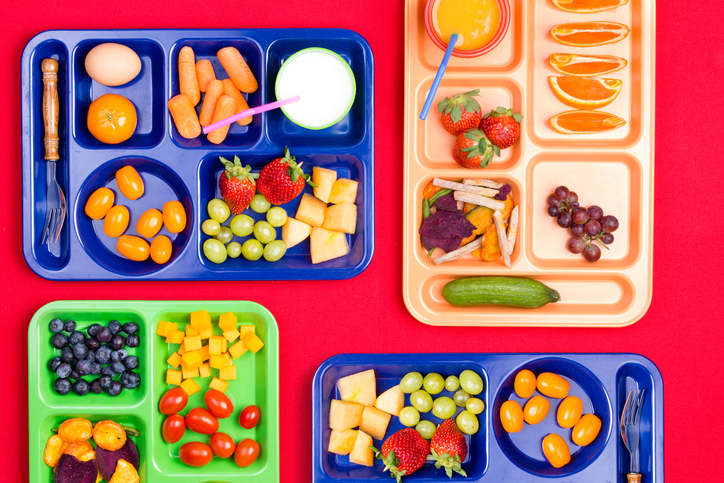Thoughts and tips from a pediatrician on healthy choices
 Kim Newell, MD, Kaiser Permanente San Francisco pediatrician, promotes healthy eating habits in children every day.
Kim Newell, MD, Kaiser Permanente San Francisco pediatrician, promotes healthy eating habits in children every day.
She and her colleagues discuss healthy habits — including healthy eating — in depth for every child who comes in for a well-care visit or checkup. For primary care pediatricians, promoting wellness and disease prevention is central to their work.
Here she shares her ideas about healthy eating for young people, students and the parents who may be looking for new ways to talk about choosing healthy foods.
Why is it important for children — especially students — to eat healthy?
To all kids, here is a message: There are foods that help power your brain and body for the whole day, week and year.
There are also foods that may make you feel energetic for only a short time. After that, they leave you feeling sluggish and foggy-brained.
Which way do you want to feel?
By choosing foods that are complete, nutrient-rich and healthy, you power your brain to think and learn and explore. Healthy food fuels your body to run, play and adventure!
What is your advice for encouraging students to choose healthy foods throughout the school day?
Fortunately, choosing healthy foods is not rocket science.
With a few simple rules of thumb, parents, teachers and pediatricians can give students the tools they need to make healthy decisions.
- Eat your rainbow. The more colors you choose, the more nutrients you get. And the more nutrients you eat, the more you super power your day!
- Eat real food. If it comes in a package or was made in a factory, food is much less likely to be healthy. Choose foods that would be recognizable to your great, great, great grandmother.
- Eat more plants. Talk about super-powered foods! Plants — veggies, beans, sweet potatoes, for example — are first-rate!
What is a common healthy-eating challenge for children, and what is a good way to overcome it?
Veggies are a big challenge for lots of kids. Many young children don’t like the taste of bitter foods. Many vegetables — the healthiest type of food — fall into this category.
As kids get older, their taste buds and the taste and smell sensors in their brains actually change. They learn to like vegetables.
The important thing is to continue to try foods, even if you once really disliked them. Encourage young ones to give different veggies a taste one more time with an open heart — and not a stink face.
For many kids, veggies become more approachable if they are dipped in sauces, such as salad dressing or pesto. Try to sprinkle veggies with cheese or a little soy sauce. Dip away! Just don’t overdo it on the sauce.
Do you have suggestions for parents who want to get their kids to eat healthy while at school or in a setting outside of the home?
For parents, keep these suggestions in mind to help with some enduring inspiration:
- Model the behavior you want. Start at your home. If there are no healthy foods available at home, or if junk food is easily available, kids will become habituated to eating unhealthy foods. If your kids don’t see you eating vegetables, it will be harder for them to do so while they are away at school or at an activity during the day.
- Check in daily about what they eat. For instance, what was offered at school or what did they have to snack on during the day? You don’t have to be a nag, but signal to them that this is important. And keep at it, even if it feels like they’ll never give you the answer you want.
- Advocate for healthy and tasty foods. Find out what the school is serving and get involved to help increase service of healthy foods and snacks at your child’s school. Support schools in their efforts to reduce unhealthy foods and snacks.
If you’d like to explore more strategies and tips to keep children well, check out Dr. Newell’s insights on The ABCs of Health Eating for Kids.




